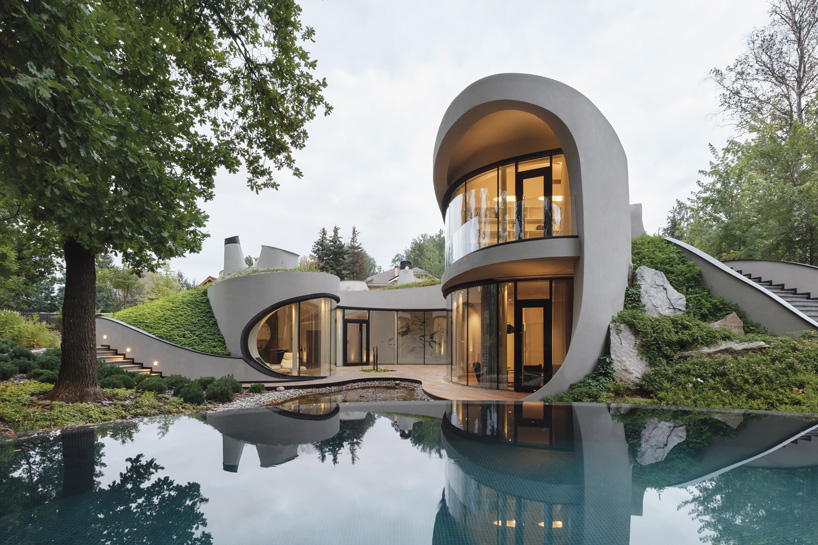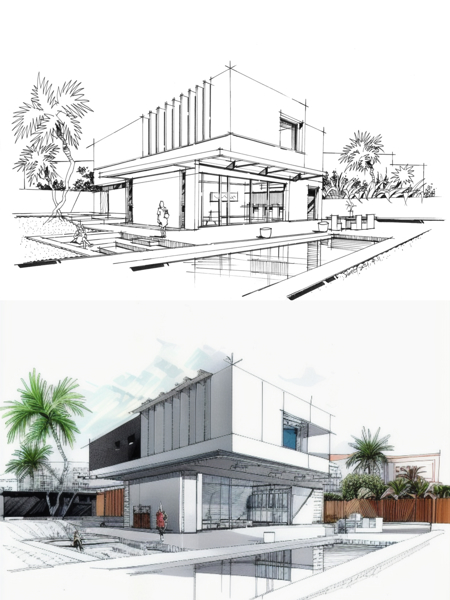How CDA Architects Include Eco-Friendly Practices in Architectural Projects
How CDA Architects Include Eco-Friendly Practices in Architectural Projects
Blog Article
Comprehending the Collaborative Process Between Designers and Engineers in Modern Building And Construction Projects
The collective process in between engineers and engineers is crucial in modern-day construction jobs, as it harmonizes layout intent with design feasibility. Exploring these characteristics reveals insights that might considerably impact project outcomes and total industry standards.
The Value of Collaboration
The joint harmony in between architects and designers is vital for the effective understanding of any kind of building job. This collaboration unites distinctive knowledge and perspectives, enabling the combination of cutting-edge layout with useful engineering options. By interacting, engineers and engineers can ensure that a job not just fulfills visual and functional needs but likewise sticks to security, sustainability, and budgetary constraints.
Partnership fosters a shared vision, facilitating the alignment of objectives and assumptions from the outset. This placement is critical in attending to prospective obstacles and mitigating threats that can occur during the job lifecycle. A joint approach permits for the efficient appropriation of sources, maximizing both time and expense.
The relevance of partnership includes the repetitive procedure of style and building, where responses from designers can notify building decisions, resulting in more possible and lasting designs. On the other hand, architects can inspire designers to think creatively concerning exactly how to attain architectural integrity without jeopardizing creative intent. Eventually, the collaborative relationship in between architects and engineers is not merely beneficial; it is essential to the creation of high-grade, functional, and ingenious developed atmospheres that fulfill the demands of culture.
Communication Methods and Tools
Efficient interaction methods and devices are important for fostering cooperation between engineers and engineers throughout the task lifecycle. Developing clear channels of communication is important to make certain that all team participants are lined up with task objectives, timelines, and responsibilities. Routine meetings, both in-person and online, supply possibilities for stakeholders to talk about development, address worries, and make informed choices.
Making use of job management software application, such as BIM (Structure Information Modeling) systems, enhances cooperation by allowing real-time sharing of design alterations and technical specifications. These devices help with openness, enabling architects and engineers to imagine adjustments and evaluate their impact on the general task.

Shared Goals and Project Vision

Establishing common goals entails open dialogue and a complete understanding of each discipline's contributions. Engineers normally concentrate on design intent, spatial connections, and individual experience, while engineers highlight structural integrity, systems functionality, and compliance with regulations (cda architects). When these point of views are lined up, the result is a cohesive task that sticks to both innovative aspirations and technical usefulness
Furthermore, a well-defined job vision promotes accountability amongst team participants, motivating each individual to take ownership of their function in attaining the desired outcome. Normal check-ins and collaborative workshops can better strengthen this dedication, permitting for adjustments to be made as the task develops. Ultimately, a shared vision not just enhances teamwork but likewise boosts the high quality of the final deliverable, resulting in effective task conclusion.
The Function of Technology
Leveraging innovation has actually become essential in improving collaboration between architects and engineers. Structure Info Modeling (BIM) stands out as a critical modern technology, allowing both designers and engineers to develop detailed 3D designs that encapsulate design intent and structural stability.
Moreover, cloud-based systems make it possible for smooth partnership, enabling project stakeholders to gain access to and update job data advice from anywhere. This cultivates a society of transparency and responsibility, as adjustments can be tracked and reviewed in real-time. Additionally, mobile applications more enhance interaction, supplying on-site teams with prompt accessibility to task specs and updates.
Arising modern technologies such as man-made intelligence and artificial intelligence are likewise beginning to contribute in predictive analysis, assisting groups recognize possible issues before they emerge. Eventually, the role of technology in architecture-engineering collaboration not only boosts operations efficiencies but also boosts development, bring about even more effective task outcomes. By accepting these technical advancements, architects and designers can make sure a more cohesive and effective joint procedure throughout the building and construction lifecycle.
Instance Studies in Effective Partnerships
Countless study illustrate the extensive effect of efficient partnerships in between engineers and designers on task results. One significant example is the collaboration on the High Line in New York City City, where landscape architects, designers, and urban planners collaborated to transform an abandoned rail line see post into a vivid public park. This multidisciplinary technique not only improved the aesthetic quality but also ensured structural security and ecological sustainability.
An additional exemplary case is the style and construction of the Sydney Concert Hall. The partnership between engineer JÃ ¸ registered nurse Utzon and structural engineer Ove Arup exhibited ingenious analytic. Their partnership permitted for the famous shell-like design while resolving intricate engineering difficulties, eventually resulting in an ageless architectural work of art.
The Burj Khalifa in Dubai even more demonstrates the significance of collective initiatives. cda architects. The integration of design and engineering expertise allowed the job group to achieve unmatched elevations while sticking to security laws and visual vision
These examples underscore the value of communication, count on, and shared objectives. In today's complicated construction atmosphere, such collaborations are vital to navigating More Bonuses difficulties and supplying tasks that fulfill both functional and visionary objectives.
Conclusion
To conclude, the collaboration in between designers and designers is vital for the success of modern building and construction projects. Efficient interaction techniques, a common task vision, and the assimilation of sophisticated innovations are crucial elements that promote this collaboration. By cultivating a society of liability and leveraging tools such as Building Information Modeling (BIM), teams can browse task intricacies, ensuring that visual, functional, and sustainability goals are accomplished. Eventually, this synergy causes ingenious and effective job results.
Report this page